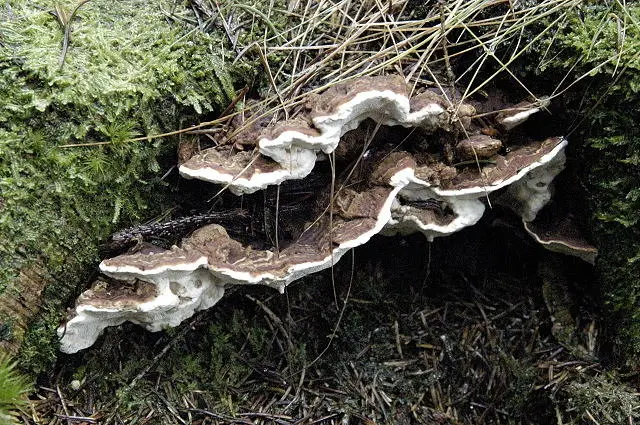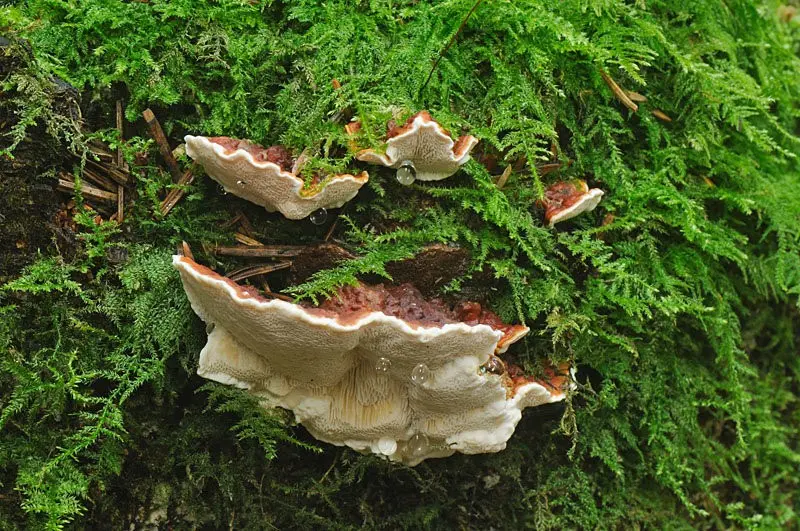Heterobasidion perennial (Heterobasidion annosum)
- Division: Basidiomycota (Basidiomycetes)
- Subdivision: Agaricomycotina (Agaricomycetes)
- Class: Agaricomycetes (Agaricomycetes)
- Subclass: Incertae sedis (of uncertain position)
- Order: Russulales (Russulovye)
- Family: Bondarzewiaceae
- Genus: Heterobasidion (Heterobasidion)
- Type: Heterobasidion annosum (Heterobasidion perennial)

Heterobazidione perennial belongs to the species of basidiomycotic fungi of the Bondartsevie family.
This mushroom is often also called root sponge.
The history of the name of this mushroom is interesting. For the first time, this fungus was described precisely as a root sponge back in 1821 and was named Polyporus annosum. In 1874, Theodor Hartig, who was a German arborist, was able to associate this fungus with diseases of coniferous forests, so he renamed its name Heterobasidion annosum. It is the latter name that is widely used today to refer to the species of this fungus.
The fruiting body of the perennial heterobasidion root sponge is varied and often has an irregular shape. It is perennial. The form is the most bizarre, both prostrate or prostrate-bent, and hoof-shaped and shell-shaped.
The fruiting body is 5 to 15 cm across and up to 3,5 mm thick. The upper ball of the fungus has a concentrically striated surface and is covered with a thin crust, which occurs in a light brown or chocolate brown color.

Heterobazidion perennial is distributed mainly in the countries of North America and Eurasia. This pathogenic fungus is economically significant for many species of trees – for more than 200 of the most diverse both coniferous and hardwood deciduous species belonging to 31 genera.
Perennial heterobasidion can infect the following trees: fir, maple, larch, apple, pine, spruce, poplar, pear, oak, sequoia, hemlock. It is most often found on gymnospermous tree species.

An interesting fact is that substances with antitumor properties were found in the chemical composition of perennial heterobasidion.









